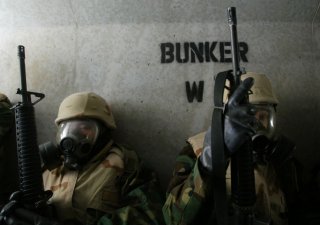The Pentagon Learned the Hard Way That Scud Missile Hunting Wasn’t Easy
The failure to destroy the launchers highlights how easy it can be to overestimate damage inflicted upon an enemy, and how difficult it is to hunt down an opponent intent on using hit-and-run tactics.
Still, the failure to destroy the launchers highlights how easy it can be to overestimate damage inflicted upon an enemy, and how difficult it is to hunt down an opponent intent on using hit-and-run tactics. Today, North Korea maintains a far larger arsenal of mobile ballistic missile launchers than Iraq ever did—weapons which could likely survive the opening days of a conflict. Of course, U.S. air power has benefited from major advances in technology since 1991, including better sensors, more efficient communication networks, near instantaneous data-links, and drones that can scout out vast swathes of terrain far more efficiently than a jet fighter can. But the Great Scud Hunt still suggests that even outdated mobile missile launchers could prove an especially difficult threat to stamp out.
Sébastien Roblin holds a master’s degree in conflict resolution from Georgetown University and served as a university instructor for the Peace Corps in China. He has also worked in education, editing and refugee resettlement in France and the United States. He currently writes on security and military history for War Is Boring.
This article first appeared in 2017.
Image: Reuters.

